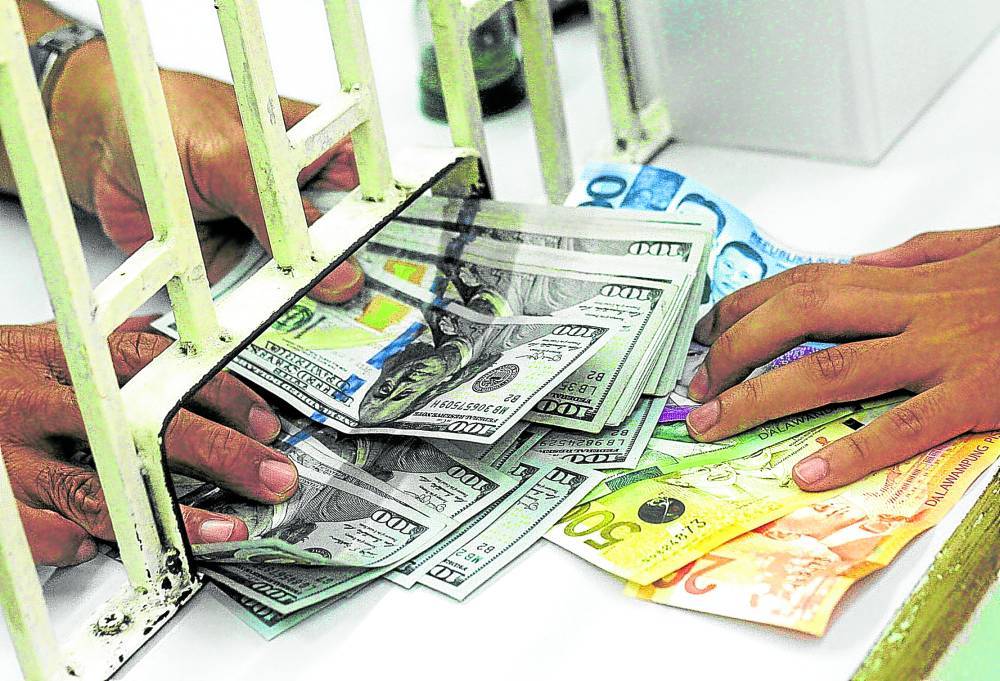Peso slips back to 57:$1

The peso again retreated to the 57-level against the US dollar on Wednesday to post its worst finish in nearly two months, as decreasing odds of aggressive rate cuts by the US Federal Reserve (Fed) and escalating Middle East conflict propped up the greenback.
The local currency lost 11.5 centavos to close at 57.02 versus the US dollar, its lowest finish since ending at 57.245 last Aug. 16.
It posted an intra-day low of 57.06:$1 as $1.58 billion worth of funds switched hands during the trading session.
Noel Reyes, chief investment officer for trust and asset management group at Security Bank Corp., said such a weakness stemmed from market reaction to last week’s strong US jobs data, which tempered bets on further hefty easing by the Fed.
The US central bank’s benchmark rate now sits between 4.75 and 5 percent following a jumbo half-point cut in September.
“The strong US dollar is still a reaction from reduced probability of aggressive cuts by the Fed after last Friday’s strong numbers, plus lack of follow-through stimulus from China,” Reyes said.
A foreign exchange trader shared the same view, but added that the Middle East crisis is also stoking capital flight to safe haven assets like the dollar.
“The local currency hit the 57-peso level anew from the combined effect of dollar safe-haven demand emanating from the escalating tensions in the Middle East, including growing market expectations of a softer US rate cut of 25 basis points in November,” the trader said.
“The peso is likely to recover some ground amid a continued softening in US inflation reports later this week,” he added.
In a new interview with Global Finance magazine, Bangko Sentral ng Pilipinas (BSP) Governor Eli Remolona Jr. said the central bank would continue to take a “data-driven approach” to policymaking amid its ongoing easing cycle.
The timing of Fed’s actions did not play much of a role in the BSP’s decision to cut the local rate by a quarter point in August, Remolona said.
”The reaction of financial markets to the BSP easing its policy rate earlier than the US Fed has been relatively muted, with the Philippine peso weakening only slightly versus the US dollar right after the recent policy decision,” he added.





















